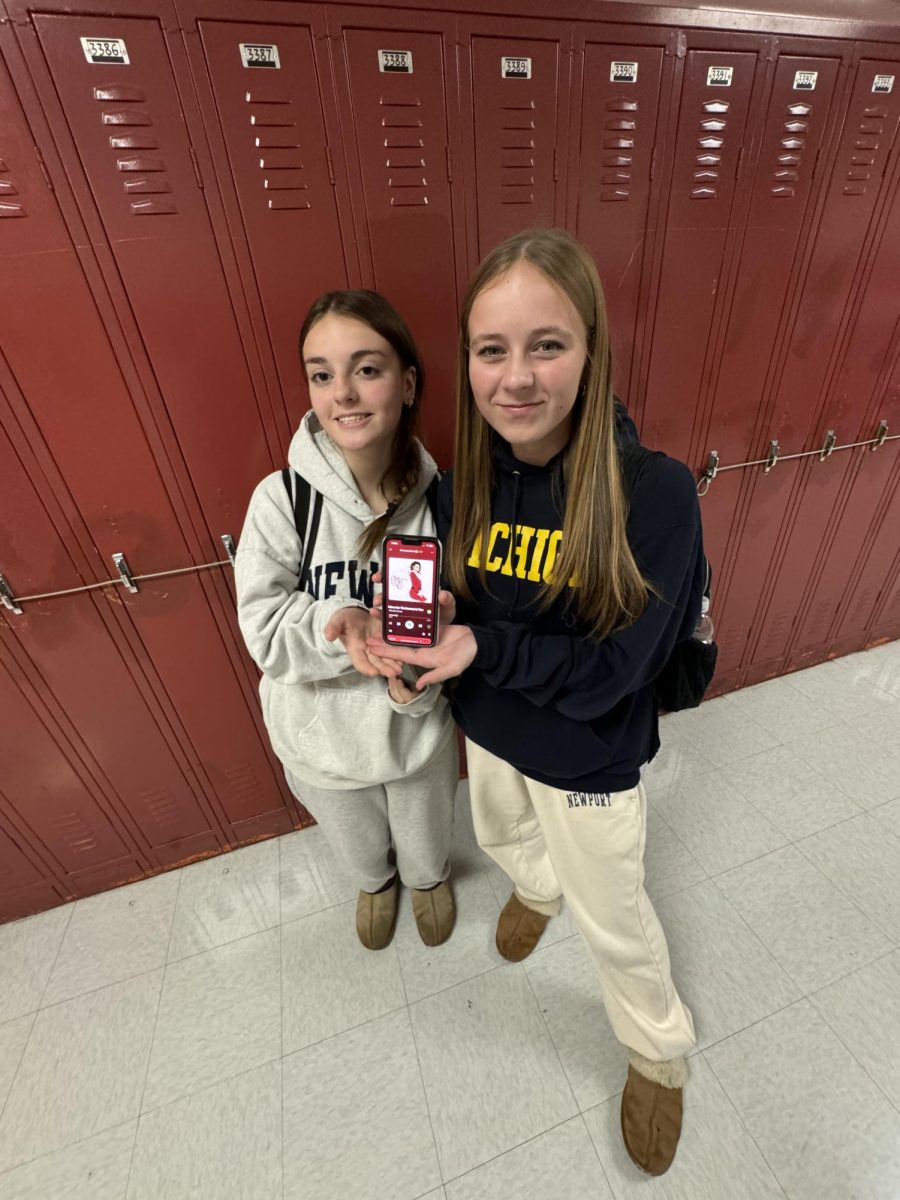Each morning, the bell rings to signal the start of a new school day at Orchard Park High School, but for a growing number of students, that bell rings unanswered. Chronic absenteeism, defined by the New York State Education Department as “missing 10 percent of school days within one academic year for any reason,” has quietly become a serious issue in schools across the State. Orchard Park is no exception. While the occasional sick day or family emergency is understandable, habitual absences are beginning to contribute to gaps in learning, disengagement, and long-term academic consequences. Despite its prevalence at OPHS, chronic absenteeism remains largely unaddressed. As students fall behind and the classroom environment suffers, we must ask “Why are so many students missing school, and what can be done about it?”
A View from the Front Desk
Orchard Park High School’s attendance secretary, Mrs. Kruszka, has witnessed this issue firsthand. She manages student attendance records every day, keeping track of late arrivals, early dismissals, and missed school days. In conversation, she attempted to frame the problem: “Chronic absenteeism is an absolute problem at Orchard Park High School…The pandemic changed the way students and even parents view school. We used to know school was mandatory. Now, it feels optional to many.” She noted that students miss classes for everything from sunny days to minor discomforts. Students even skip classes that they “don’t like.” There are many common contributors to the growing trend. After speaking with her, it’s clear that while some absences are legitimate, many seem to be a matter of convenience, or even habit.
What Students Are Saying
Most students are well aware of the issue. Senior Class President Ashley Rozic expressed that a lot of students are “frequently missing classes” at OPHS. She noted that students often miss for illness, family matters, or even “mental exhaustion.” She added, “It is unrealistic to expect students to attend every day,” but emphasized that students aren’t being clearly informed about attendance policies or consequences.
Policy vs. Practice
According to Orchard Park Central School District’s Comprehensive Student Attendance Policy (7110), “The building attendance policy will be provided to parents/persons in parental relation and provided to students at the beginning of each school year or at the time of enrollment in the District.” This is plainly outlined here in an effort to make sure families are aware of standards for attendance. The policy clearly states that “The District will promote necessary community awareness…promoting the understanding of this policy to students and their parents.” However, when it comes to students, this policy is not presented in a meaningful and memorable manner. Senior Scout Moskal argued that the acknowledgement of school policies by students at the start of each year is more a “box to be checked” than a meaningful explanation and understanding of expectations.
Especially as high schoolers, a lot of the responsibility to show up to school each day falls on the shoulders of the student, not the parent. Regarding attendance policies and consequences, Rozic purported that most of what she’s heard has come from teachers, not school administrators. “I would like for students to be better informed of [attendance] policies,” said Rozic. Students need to be properly informed if there is to be any improvement in chronic absenteeism at OPHS.
A Culture of Optional Attendance?
STAP Comm President Luke Lippitt sees the issue as more than a concern, and rather as a part of OPHS’s culture. “We seem to be at a ‘miss school at your own pace’ type of system,” said Lippitt, pointing out that some students whose attendance “falls quite short of the minimum requirement to acquire course credits…seem to be acquiring the credits anyway.” Lippitt expressed that, while some student absences are understandable and unavoidable, unchecked chronic absenteeism leads students to miss out on both instructional and social learning.
The Remote Learning Legacy
Many students have grown used to accessing lessons and materials online—a habit that stems from the COVID-19 Pandemic. OPHS counselor Mr. Bove noted that tools like Google Classroom are useful in that “students still have access to a bulk of the materials that they may have in school,” but “the very big and important piece they are missing is the instruction itself and the nuance of the assignments at hand.” Bove described a trend of students who “try to piece together their own education” from behind a screen. This form of “learning” makes for a loss of context and connection that comes from being in the classroom.
Mrs. Kruszka, attendance secretary, agreed, stating that “the chromebooks make it so that students don’t need to come into school to do their work.” It’s clear that continued access to online learning substitutes is a major contributor to the issue of chronic absenteeism at OPHS.
Mixed Messages from the State
Teachers are also navigating blurred expectations. New York State defines “Successful Completion of a Unit of Study,” or of a singular course, as obtaining at least 180 minutes of instruction in that course per week throughout the academic year. According to OPHS English teacher Ms. Rodemeyer, even though the State requires a certain amount of “seat time” or “instruction” for credit, “failing students based on their lack of seat time alone is not supported by administration—and now not even by the State.” She explained that failure due to poor attendance is rare unless the student is also failing academically. The State even allows for other means of obtaining credit, including credit by examination. This lax enforcement makes the State’s policy seem symbolic rather than functional. If the goal is to improve attendance rates, this is not at all a sustainable model. Everyone should be held to the same standards.
Seeking Accountability and Change
Kruszka and others at OPHS have acknowledged that change is needed. “We are having committee meetings on how to get the students to be held more accountable… and maybe there would be more consequences,” she said. She also emphasized that while many students and parents are cooperative, stronger communication and consistency are necessary. “We need to let [students] know the importance of being here…You can be much more successful if you stay in the classroom.”
Lippitt believes that cultural shifts are just as important as policy shifts. Some classes still take a 1950s approach to learning,” he said, arguing that rethinking strategies for student engagement and developing a sense of intergenerational understanding could improve school climate and boost attendance naturally over time.
Calls for Compassion and Flexibility: A Support-Based Solution
Some individuals argue that chronic absenteeism isn’t as substantial an issue as it appears to be and hold that post-pandemic leniency is appropriate. They insist that school districts need to be more flexible surrounding student absences for reasons ranging from health to family concerns. According to a 2021 article from Education Week, “‘Extreme’ Chronic Absenteeism? Pandemic School Attendance Data is Bleak, but Incomplete,” the pandemic forced schools to become more lenient about attendance, prioritizing student mental health and offering remote learning options when possible. The article notes that strict attendance rules may penalize students with legitimate health or family concerns, increasing stress and anxiety.
This concern is valid, and the District’s own Comprehensive Student Attendance Policy no longer rewards perfect attendance or offers any additional incentives for being in school. This is done in an attempt to avoid encouraging students to attend school when sick. Additionally, mental health and family needs should never be ignored.
But the current problem isn’t just occasional absences—it’s chronic, repeated absences that erode the foundation of consistent instruction. The solution to this issue isn’t just ignoring it. Bove put it best: “The biggest factor is breaking the cycle… [students] just walking back in the door and starting one step at a time.” The solution doesn’t have to be punitive, but it does have to be intentional and consistent. Harsh punishment isn’t needed to combat this issue, but proactive support and student engagement are. Clear policies, timely communication with families, and tailored interventions, like check-ins or academic coaching, can help students feel supported while reinforcing that school attendance matters.
Rozic, too, supports a supportive rather than disciplinary model. “Counselors should focus on students with low attendance but offer them guidance instead of punishment,” she said.
The Role of the Attendance Committee
In addition to the efforts of counselors and administration, OPHS has an Attendance Committee tasked with addressing repeated student absences. The committee, which includes faculty members Mrs. Giallella and Mrs. Gibson, relies heavily on referrals from classroom teachers to identify students with concerning attendance patterns. According to Rodemeyer, the referral system for attendance, though separate, parallels the disciplinary referral system, meaning that attendance concerns are documented and reported similarly to behavioral incidents. Although the committee is designed to support intervention efforts, its effectiveness relies on early engagement and consistent follow-up with students—both of which can be influenced by several factors, including the timeliness of teacher referrals. I reached out to Giallella at the time of writing this article, but she was unavailable for comment.
Far-Reaching Effects on Classrooms
Chronic absenteeism is not just a logistical issue, it’s an educational and cultural one. A stronger system of accountability, communication, and engagement is necessary. “We need to tighten the reins a little bit,” said Kruszka. She’s absolutely right. Students should know attendance policies from the start of the year, understand how absences impact their learning and credit, and feel supported when they struggle to show up.
Rodemeyer agrees, showing concern for how chronic absenteeism affects everyone. “If I have 3-5 students absent daily from each of my 5 classes, at the end of each day, I may have 15-25 students on my radar for make-up work, missed handouts, and, most importantly, missed instruction,” she said. This isn’t a case of individual students falling behind in isolation; their absence creates a ripple effect that impacts the entire classroom environment. Teachers like Rodemeyer are forced to make adjustments to the way they would normally teach, adjusting pacing, reteaching, and altering lesson plans. “Sometimes I slow down or forgo instruction if too many [students] are absent,” she admitted. In these moments, the classroom dynamic shifts, slowing “everything down for everyone—even for those without an attendance issue.” In essence, the learning experience for all students is diluted, not because of a lack of effort from educators, but because the revolving door of student absences makes consistent, in-depth teaching nearly impossible. Chronic absenteeism has become a larger issue than it started out as. It’s a collective problem that compromises the learning experience for all.
Moving Forward: A Call to Action
Orchard Park High School cannot afford to treat absenteeism as a background issue, nor as an inevitable side effect of modern education. It is a symptom of deeper issues—disengagement, miscommunication, and a lack of clear expectations. OPHS must adopt a more proactive approach that combines accountability with compassion. Students need to be better informed of attendance policies and expectations at the start of each year. Parents should be partners in reinforcing the importance of showing up to school. OPHS should invest in a system that not only tracks absenteeism, but responds to it early—through outreach, discussion, and personalized support. At the same time, we must reimagine what it means to engage students in learning. If a culture of “missing school at your own pace” is to change, it starts with the spread of a shared belief: that every day in class matters, not just for individual success, but for maintaining the integrity of education and the school environment.







Mr. Johnson • Jun 5, 2025 at 10:34 am
I’m proud of the work OP has done at the elementary level to address chronic absences with the hope that students develop positive attendance habits that they carry with them into OPMS and OPHS. This article is thoughtfully researched and includes a variety of perspectives, most importantly from our students. You have a career in journalism in your future, Salem, if you choose it – you are making Windom proud!
Addie • Jun 9, 2025 at 11:15 pm
I agree! Chronic absenteeism is a growing issue that should be addressed, and this article is a great step towards doing this.